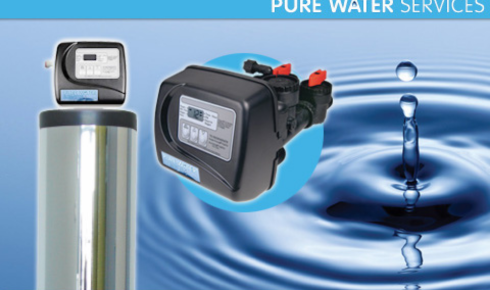There’s something quietly powerful about turning on a tap and watching clean, clear water pour out. It’s so ordinary that most of us don’t stop to think about it. But behind that everyday flow is a whole world of systems, testing, filtration, and dedication — the unseen hands making sure what reaches you is safe, balanced, and pure. The truth is, water isn’t just another utility; it’s life in motion. And taking care of it requires more thought than most people realize.
For years, people have talked about sustainability in terms of air, energy, or forests. But water — the substance that covers most of our planet and fills up most of our bodies — is finally getting its well-deserved spotlight. Across homes, industries, and cities, there’s a growing movement to rethink how we clean, recycle, and protect it.
The Heart Behind Every Drop
Behind every glass of clear drinking water is a story of chemistry, filtration, and quality control. Companies that provide pure water services aren’t just installing filters — they’re guardians of public health. From testing for contaminants to maintaining systems that remove chlorine, bacteria, and metals, these services make sure the water we drink, cook with, and bathe in stays within safety standards.
But it’s not just about removing impurities. It’s about creating balance — ensuring minerals remain, the taste feels right, and the systems don’t overprocess the water into something lifeless. The goal isn’t perfection; it’s purity that still feels natural. And that’s a subtle art.
In many regions, people have started realizing that municipal water alone isn’t enough. They’re turning to customized purification systems that adapt to local water sources — wells, lakes, rainwater, or municipal supplies. Each source has its own personality, and each requires a tailored approach to purification.
Understanding Your Source
Let’s face it — water is complex. It can pick up minerals from rocks, bacteria from pipes, or chemicals from agriculture miles away. That’s why more people are starting to select source water carefully, especially for industrial or large-scale applications. Not all water is created equal, and not all sources are right for every purpose.
For instance, the water used in pharmaceuticals, food production, or microchip manufacturing must meet standards that go far beyond what’s needed for everyday use. That kind of precision demands not just filtration but understanding — knowing where the water comes from, what it carries, and how to transform it without stripping its integrity.
Choosing your water source wisely isn’t just about quality; it’s about sustainability. Many communities are exploring options like reclaimed water, rainwater harvesting, and local aquifer management to reduce dependence on overused systems. Because when you protect your source, you protect your future.
The Science and Soul of Filtration
Technology has come a long way from the simple carbon filters that once dominated kitchens. Now, we’re talking about multi-stage systems that use UV purification, reverse osmosis, and advanced ion exchange to handle the microscopic challenges water faces.
Yet, it’s not just technology that drives innovation. It’s a growing awareness — a cultural shift — toward stewardship. People want to know what they’re drinking, where it came from, and how it was treated. Transparency is the new standard.
That’s where modern water source solutions come into play. They integrate sensors, smart monitoring, and AI-driven systems that track every aspect of water quality in real time. These solutions aren’t just reactive; they’re predictive. They can detect changes before they become problems. Imagine getting a text that your home’s filtration system detected higher levels of minerals or chlorine and automatically adjusted — that’s the new frontier.
But even as technology evolves, the core philosophy remains timeless: respect the resource. Every system, every filter, every innovation should lead us toward cleaner, more reliable water — not just for us, but for the generations who’ll depend on the same rivers and aquifers we’re using today.
Everyday Awareness, Global Impact
It’s easy to underestimate how much our daily choices affect water systems. The cleaning products we use, how we dispose of waste, even the kind of lawns we maintain — they all play a role in what eventually flows into our drains and rivers.
Small habits add up. Choosing eco-friendly detergents, fixing leaks, and supporting community water programs might seem insignificant, but together they shape a culture that values conservation over convenience.
We’re already seeing shifts in cities adopting green infrastructure — permeable pavements that absorb rainwater, urban wetlands that naturally filter runoff, and policies that incentivize efficient irrigation. These aren’t just environmental gestures; they’re signs that the world is waking up to water’s quiet importance.
The Future of Water is Personal
It’s easy to think water problems are far away — droughts in another state, contamination in another country. But the reality is, clean water is personal. It flows through your pipes, your body, your home. Taking care of it isn’t someone else’s job; it’s everyone’s.
More people are investing in home filtration systems, testing kits, and local awareness drives. Schools are teaching water science as part of sustainability education. Businesses are re-evaluating their water footprints and innovating ways to recycle and reuse.
It’s a shared awakening — one that reminds us that water isn’t just something we consume; it’s something we’re responsible for.
Closing Thoughts
There’s a quiet beauty in realizing that the water you drink today might have once fallen as rain centuries ago, cycled through mountains, rivers, and clouds. It’s the ultimate recycler, constantly renewing life — but only if we let it.
Clean water doesn’t happen by accident. It’s the result of science, effort, and care. So, the next time you fill a glass or take a shower, take a second to appreciate what’s behind that simple act — the people, the systems, and the shared responsibility that keeps it flowing.
Because protecting water isn’t just about survival. It’s about gratitude — and the understanding that the smallest drop still carries the story of our entire planet.

